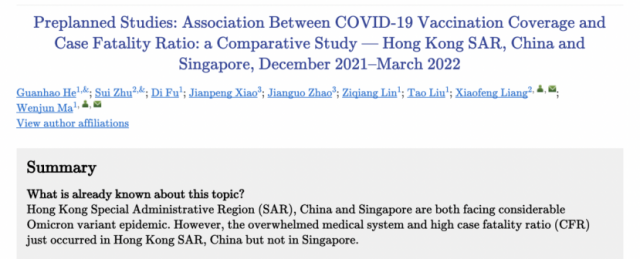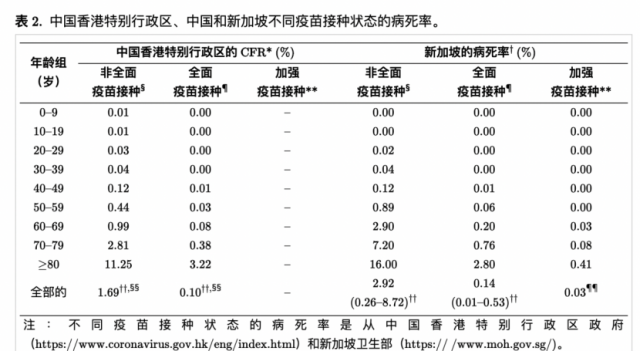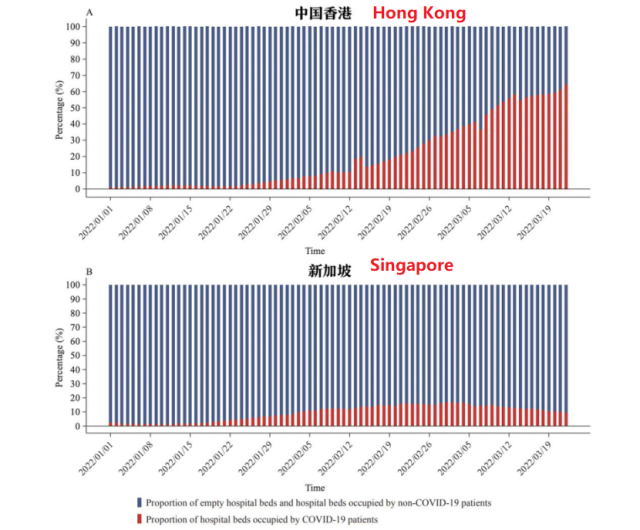The “case fatality rate” of Hong Kong’s COVID-19 is nearly 10 times that of Singapore
- Normal Liver Cells Found to Promote Cancer Metastasis to the Liver
- Nearly 80% Complete Remission: Breakthrough in ADC Anti-Tumor Treatment
- Vaccination Against Common Diseases May Prevent Dementia!
- New Alzheimer’s Disease (AD) Diagnosis and Staging Criteria
- Breakthrough in Alzheimer’s Disease: New Nasal Spray Halts Cognitive Decline by Targeting Toxic Protein
- Can the Tap Water at the Paris Olympics be Drunk Directly?
The “case fatality rate” of Hong Kong’s COVID-19 is nearly 10 times that of Singapore
- Should China be held legally responsible for the US’s $18 trillion COVID losses?
- CT Radiation Exposure Linked to Blood Cancer in Children and Adolescents
- FDA has mandated a top-level black box warning for all marketed CAR-T therapies
- Can people with high blood pressure eat peanuts?
- What is the difference between dopamine and dobutamine?
- How long can the patient live after heart stent surgery?
The “case fatality rate” of Hong Kong’s COVID-19 is nearly 10 times that of Singapore, China CDC issued a document to analyze the reasons.
Both are economically developed regions with similar population densities, “both Hong Kong, China and Singapore face severe Omicron variant epidemics, but medical runs and high case fatality rate (CFR) phenomena only occur in Hong Kong SAR, China. “
On July 25, China CDC Weekly published an article analyzing the epidemic prevention situation in the two places at the beginning of the year. From December 2021 to March 2022, under the sweep of Omicron, the fatality rate of the Hong Kong population is as high as 0.53%. For comparison, Singapore is only 0.06%.
With the decline of Omicron’s virulence, the case fatality rate in Hong Kong at the beginning of the year was nearly 10 times that of Singapore. The article believes that exploring the key factors can provide important inspiration for China to formulate and adjust future COVID-19 epidemic prevention strategies.

Nearly 10-fold difference in mortality
“Several infected pilots did not comply with quarantine regulations and entered the community, which is the suspected source of the ‘Omicron epidemic’ in Hong Kong,” the article said.
Since the outbreak of the COVID-19 epidemic, Hong Kong has always adopted a “zero COVID-19” policy, through strict non-pharmaceutical intervention measures (NPI) , including border quarantine, social distancing, etc. to maintain a low incidence rate.
However, the attack of Omicron has caused the epidemic to spread rapidly.
In addition, the low vaccination rate of the elderly and the imperfect triage system may further exacerbate the medical run.
Singapore’s overall anti-epidemic strategy is different.
Before August 2021, Singapore will adopt a containment strategy in epidemic prevention , and the vaccination rate will gradually reach 78%.
Since then, Singapore has gradually lifted NPI restrictions, continued to promote COVID-19 vaccination, and optimized triage strategies in an attempt to achieve a transition to a “coexistence with the virus” strategy.
The article pointed out that the most direct reason for the huge difference in the fatality rate between the two places may be the vaccination rate. The results of the study show that the 70-year-old in Singapore:
- The case fatality rate among those who were not fully vaccinated was 7.2%–16%;
- The case fatality rate of full-course vaccination is 0.76%–2.8%;
- Booster vaccinated 0.08%–0.41%.
Similar results were observed in Hong Kong: the fatality rate was 2.81%-11.5% for people over 70 years old who had not completed the vaccination, and 0.38%-3.22% for those who were fully vaccinated.
 Case fatality rates by vaccination status in Hong Kong and Singapore
Case fatality rates by vaccination status in Hong Kong and Singapore
The data suggest that the difference in case fatality rate can reach nearly 10 times between different vaccination status.
However, as of March 22, 2022, Hong Kong’s full-course vaccination rate and booster vaccination rate were 76.15% and 34.5%, respectively, far lower than Singapore’s 92% and 71%.
A separate analysis of people over 70 years old shows that the vaccination rate in Singapore is as high as 95%, but only 56.82% in Hong Kong. “The case fatality rate in Hong Kong during the fifth wave of the epidemic was much higher than that in Singapore, probably due to lower vaccination rates, especially among the elderly,” the article said.
Going a step further, the researchers included data from 52 countries and performed multiple linear regression analysis on nine variables, including vaccination status, per capita GDP, and the proportion of the population over 70 years old. are the two most important factors affecting the mortality rate.
The obesity rate in Hong Kong is 3.4 times that of Singapore
In addition to vaccination rates, researchers believe the reasons for Hong Kong’s higher case fatality rate in the fifth wave include:
Aging
The article points out that age is the strongest predictor of infection mortality (IFR) , and a range of reasons, including immune aging, underlying diseases, and age-related injuries, can explain why the elderly have higher infection mortality rates under the COVID-19. The proportion of Hong Kong’s population aged 70 and above is 12.10%, which is 1.65 times that of Singapore.
Chronic
The obesity rate in Hong Kong is as high as 29.9%, compared with 8.7% in Singapore. At the same time, the prevalence of hyperlipidemia and hypertension in Hong Kong was also higher than that in Singapore, 49.5% vs. 33.6% and 27.7% vs. 21.5%, respectively.
Immunity after natural infection
As of December 31, 2021, Singapore has reported a total of 279,450 Covid-19 cases, while Hong Kong has only 12,649.
In theory, even excluding the impact of vaccination, some people in Singapore have developed a certain degree of immunity to the new coronavirus through natural infection.
Triage system
The article pointed out that in the early stage of the fifth wave of the epidemic, the triage strategy in Hong Kong was not perfect.
A small number of patients without severe symptoms occupied hospital beds, and severe patients could not be admitted.
The occurrence of medical runs led to an increase in the fatality rate.
Judging from the data, since February this year, the hospital bed occupancy rate of Hong Kong’s COVID-19 patients has risen sharply, and it once exceeded 60% in March.
However, the operation of the hospital in Singapore has always maintained a good trend, and the bed occupancy rate of COVID-19 patients has remained below 20%.
 Comparison of hospital bed occupancy rates for COVID-19 patients in Hong Kong and Singapore
Comparison of hospital bed occupancy rates for COVID-19 patients in Hong Kong and Singapore
Number of detections
From January 2022 to March 2022, the daily number of nucleic acid and rapid antigen tests in Hong Kong was 22.5 per 1,000 people, and that in Singapore was 37.8 per 1,000 people.
Obviously, the development of specific drugs, sufficient ICU wards and treatment capabilities, and a complete hierarchical diagnosis and treatment system are all important indicators of whether or not to “end the threat of the COVID-19.”
However, from a practical point of view, neither the cultivation of talents in the field of intensive care nor the construction of the level of primary care, including the research and development of drugs, can be solved in the short term.
At present, the most practical and low-cost way is to promote more effective vaccination, especially among the elderly.
The researchers said in the article that real-world evidence shows that vaccines have a good effect in preventing “COVID-19 deaths”, and called for the public, especially the elderly, to get the vaccine that is available as soon as possible.
The “case fatality rate” of Hong Kong’s COVID-19 is nearly 10 times that of Singapore
(source:internet, reference only)
Disclaimer of medicaltrend.org
Important Note: The information provided is for informational purposes only and should not be considered as medical advice.



